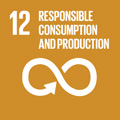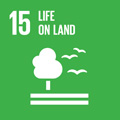- Docente: Alessia Mariotti
- Credits: 6
- SSD: M-GGR/02
- Language: English
- Teaching Mode: In-person learning (entirely or partially)
- Campus: Rimini
- Corso: Second cycle degree programme (LM) in Tourism Economics and Management (cod. 8609)
Learning outcomes
At the end of the module,students shall be familiar withthe concepts of cultural and heritage tourism, tangible and intangible cultural heritage,cultural tourism destinations and products;cultural routes, clusters and local systems of tourism supply, management of tourism in cultural sites/cities. The international charts and conventions (UNESCO, ICOMOS, CoE, etc.) concerning tourism and cultural heritage as well as the cultural values underpinning them (Outstanding Universal Value/OUV, European Shared Identity) willallow students to deal withterritorial/local andregional labels for tourism promotion.Particular attention will be paid to the capability of students in designing cultural tourism based products and projects aiming at local development in a transnational perspective.
Course contents
This is a joint course given by prof. Patrizia Battilani and
prof. Alessia Mariotti and includes both, classroom lectures
and fieldworks
At the end of the course the student should be able to analyse the local systems of tourism supply and in particular the cultural tourism districts in need of a specific management and promotion strategy.
Contents of Prof. Mariotti lectures will be:
- 1972 UNESCO Conventions for the protection of world cultural and natural heritage (material heritage) and it's implications in local territorial development
- Tourism in UNESCO programmes, positive and negative impacts of tourism, role of tourism for world heritage properties protection, role of tourism for poverty alleviation
- UNESCO World heritage sites management plans as a tool for cultural and tourism policy and governance integration
- Definition of the local systems of tourism supply
- Socio cultural carrying capacity: tools for assesment
- The Cultural Routes of the Council of Europe Programme: a tool for territorial recomposition
- Project design for sustainable tourism development
- How to plan and develop sustainable tourism products
- Creative tourism for local development
- Feasibility studies for new cultural tourism products and cultural routes
The above mentioned topics will be complemented with methodologies and tested by students during the fieldwork.
The program of the first part of the course is available on Prof. Battilani's homepage.
Readings/Bibliography
The definitive list of readings will be communicated during the first lecture of the second module.
Below a list of useful introductory readings.
Council of Europe, Cultural Routes Management: from theory to
practice. Step by step guide to the Council of Europe Cultural
Routes, Council of Europe Publishing, 2015.
Wilson J. and Clavé S.A. (eds), Geographies
of Tourism: European Research Perspectives, Emerald, UK,
2013.
Borghi R., Mariotti A. e Safarzadeh N., Tourism and recent Heritage, Mutualheritage, ISBN: 978-2-9538332-1-8 free downloadable at http://evolving-heritage.net/http://evolving-heritage.net/wp-content/uploads/2011/10/Handbook-tourisme-et-patrimoine.pdf
Robinson M. e Picard D., Tourism, culture and sustainable development, UNESCO, 2006. (DOC n° CLT/CPD/CAD - 06/13)
Teaching methods
Both traditional lectures and fieldworks are included.
The fieldwork could include a visit to a tourist destination and the meeting with the stakeholders. Then on the basis of the collected information and classroom lectures, students will prepare a project aimed for the development of new cultural tourism products for the selected destination.A seminar series will also beorganizedduring teaching hours, allowing students to acquire newperspectivesfrom international researchers and experts.
Assessment methods
The exam is composed of a written test (70% of the final mark), covering the topics of the theoretical lectures and seminars and a presentation (30% of the final mark) on a specific topic agreed during the lectures.
To pass the written exam, the student should demonstrate on one
side to have reached the learning outcomes and on the other to be
able to use the concepts learnd during the course, applying them to
the analysis of the relationships between tourism and local
territorial systems. Out of topic answers will not be evaluated. To
pass the exam the student has to answer to all the questions.
During the exam, the students are allowed to have on them only
stationary and an identity card or document. Paper will be
distributed by the teacher. The questions will be simultaneously
given at the beginning of the exam (if necessary through a PPT). In
the first five minutes students not feeling able to give proper
answers to the questions are allowed to leave the exam. Each answer
will be evaluated in 30 points, the final mark consist in the
average of the two evaluations (0,5 point will be round up to the
next point). Registration for the exam is compulsory, and students
have to register through AlmaEsami according
to the general rules of the School.
The student will find the result of the integrated exam (the
average of the two marks in geography and history) only after
having passed both parts. Usually the written exam for both
(history and geography) could be passed on the same day.
Teaching tools
Teaching hours will be integrated with practical exercises:
a list of book titles and/or topics will be distributed at the beginning of the course in order to foster the scientific debate among the students
Office hours
See the website of Alessia Mariotti
SDGs



This teaching activity contributes to the achievement of the Sustainable Development Goals of the UN 2030 Agenda.
